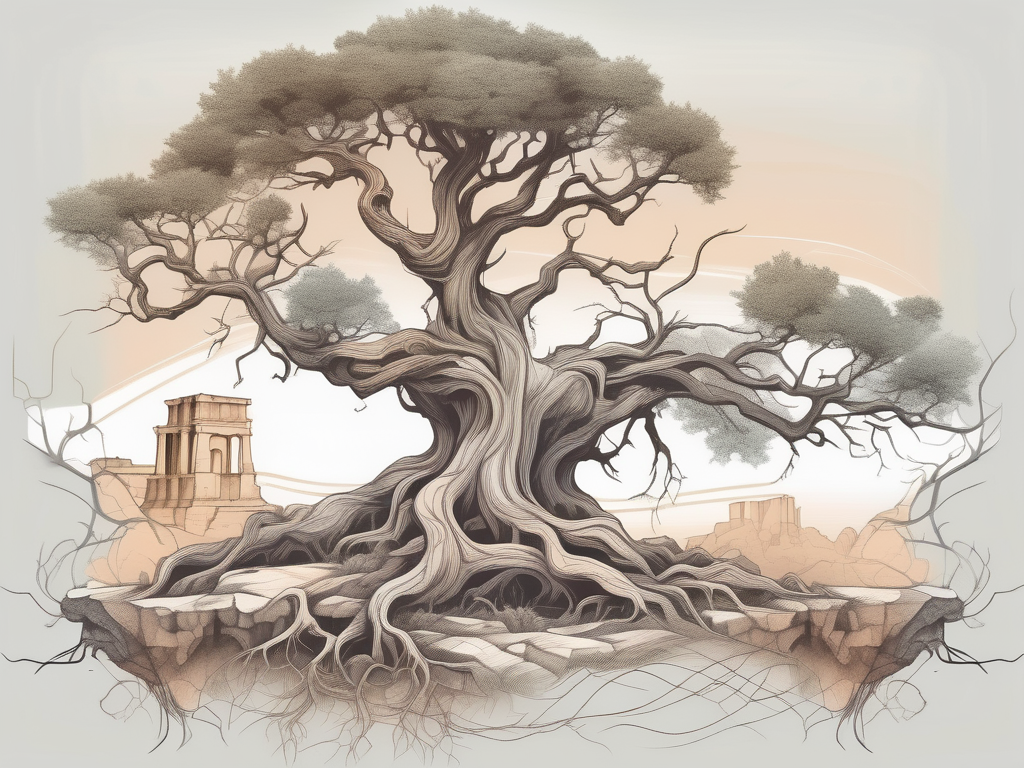The Fascinating World of Ancient and Historic Trees

The Fascinating World of Ancient and Historic Trees
Trees have been an integral part of our planet for millions of years, providing shelter, sustenance, and even spiritual significance. Some of the world's oldest and most historic trees have witnessed the rise and fall of civilizations, survived natural disasters, and continue to thrive, offering us a living link to our past. In this exploration, we delve into the fascinating world of ancient and historic trees, their significance, and how we can ensure their preservation for future generations.
Understanding the Importance of Ancient and Historic Trees
Ancient and historic trees are not just old trees. They are living monuments that have stood the test of time. They are a testament to the resilience of nature and serve as a reminder of our responsibility to protect and preserve our natural environment.
These trees have played a significant role in human history as well. They have been the subject of myths and legends, served as landmarks and meeting places, and have even been used as natural calendars. Their rings tell stories of climatic changes, natural disasters, and human activities over the centuries.
The Oldest Trees in the World
The Methuselah tree, a bristlecone pine located in California's White Mountains, is estimated to be over 4,800 years old, making it one of the oldest known living trees. Another ancient tree, named Prometheus, was also a bristlecone pine and was estimated to be around 4,900 years old when it was cut down in 1964.
However, the title of the oldest tree goes to Old Tjikko, a clonal tree in Sweden. While the visible part of the tree is only about 600 years old, its root system has been dated to 9,550 years, making it the oldest known clonal tree.
Historic Trees and Their Significance
Historic trees have played a significant role in various cultures and civilizations. For instance, the Bodhi Tree, under which Buddha is believed to have attained enlightenment, is revered in Buddhist culture. The Major Oak in Sherwood Forest, believed to be the hideout of Robin Hood, is a significant part of English folklore.
In the United States, the Emancipation Oak, where the Emancipation Proclamation was first read in the South, stands as a symbol of freedom and equality. These trees, and many others, hold a special place in our history and culture.
Preserving Ancient and Historic Trees
Preserving these ancient and historic trees is crucial for maintaining our natural heritage. However, these trees face numerous threats, including climate change, disease, and human activities. Therefore, it is essential to take steps to ensure their survival.
According to the experts at 770-Tree-Guy, a leading tree care service, proper care and maintenance are key to preserving these trees. This includes regular health checks, proper pruning, and protection from pests and diseases.
Tree Care Advice from 770-Tree-Guy
Regular health checks are crucial for early detection of any potential issues. This includes checking for signs of disease or pest infestation, as well as assessing the overall health of the tree.
Proper pruning is also essential. This not only helps maintain the tree's health by removing dead or diseased branches, but also helps preserve its historic shape and form.
Protection from pests and diseases is another critical aspect of tree care. Using organic and environmentally friendly methods to control pests and diseases can help ensure the tree's longevity without harming the surrounding ecosystem.
Article Summary
- Ancient and historic trees are living monuments that have stood the test of time.
- These trees have played a significant role in human history and culture.
- The oldest known living tree is the Methuselah tree, while the oldest known clonal tree is Old Tjikko.
- Preserving these trees is crucial for maintaining our natural heritage.
- Proper care and maintenance, including regular health checks, proper pruning, and protection from pests and diseases, are key to preserving these trees.
In conclusion, the world of ancient and historic trees is indeed fascinating. These trees serve as a living link to our past, reminding us of our history, culture, and our responsibility towards nature. By taking proper care of these trees, we can ensure that they continue to stand tall for generations to come.

